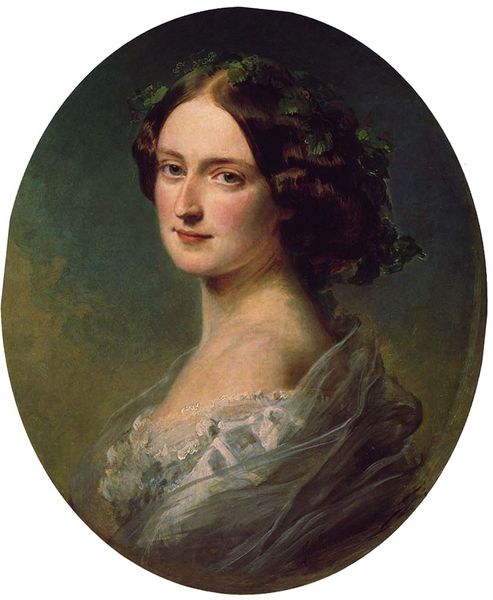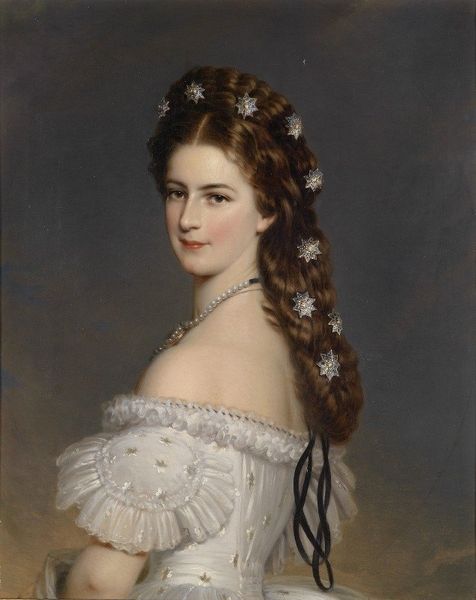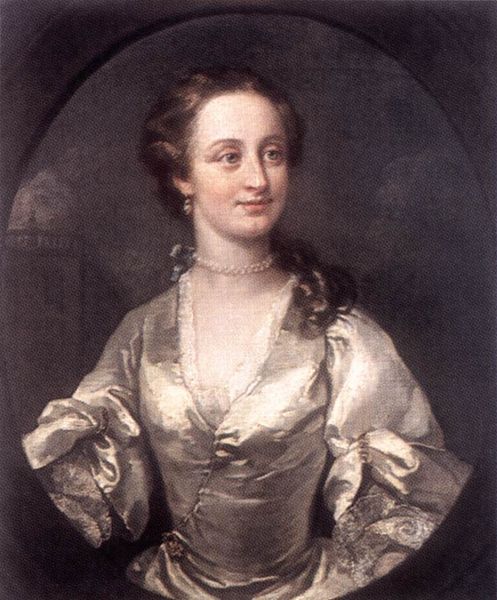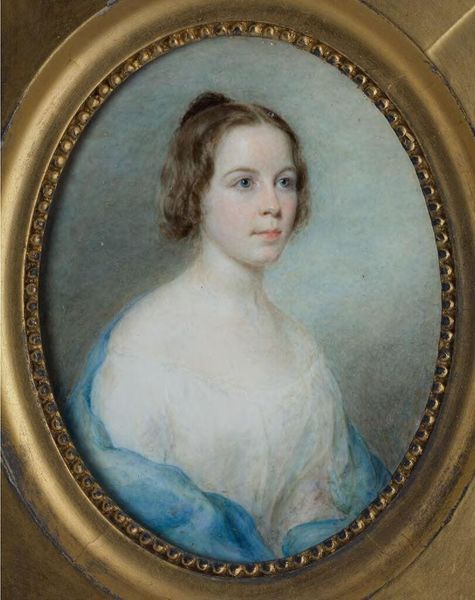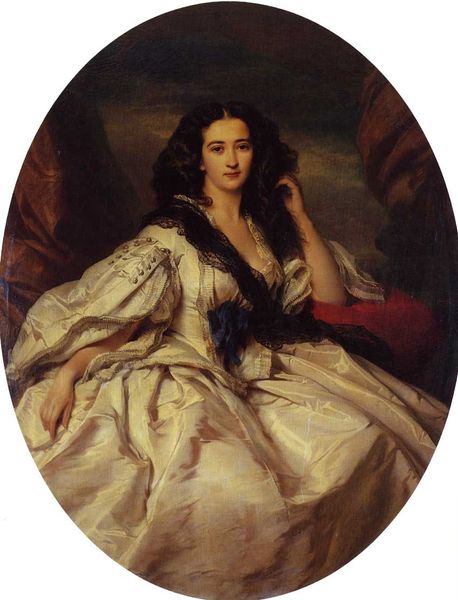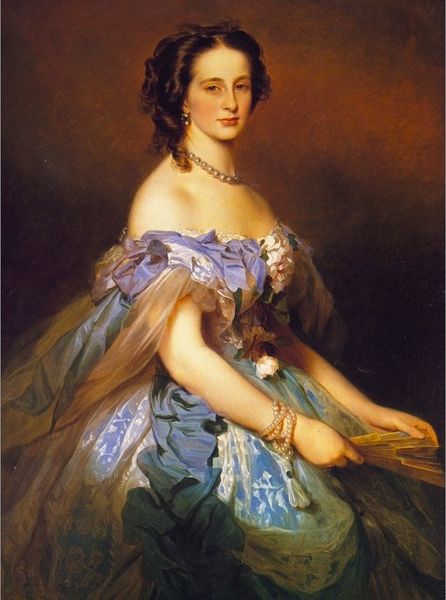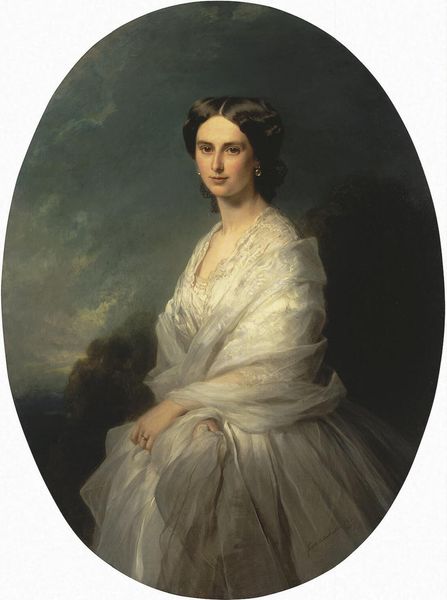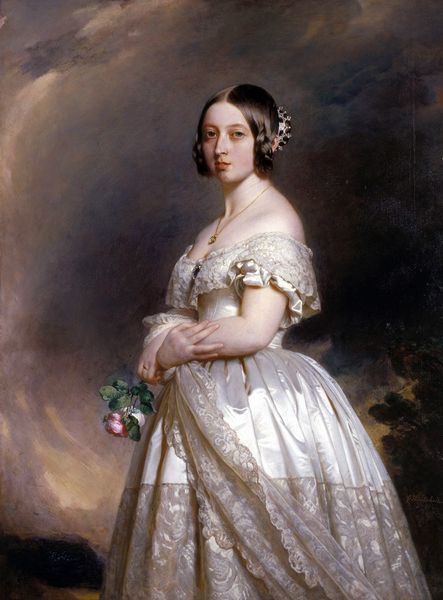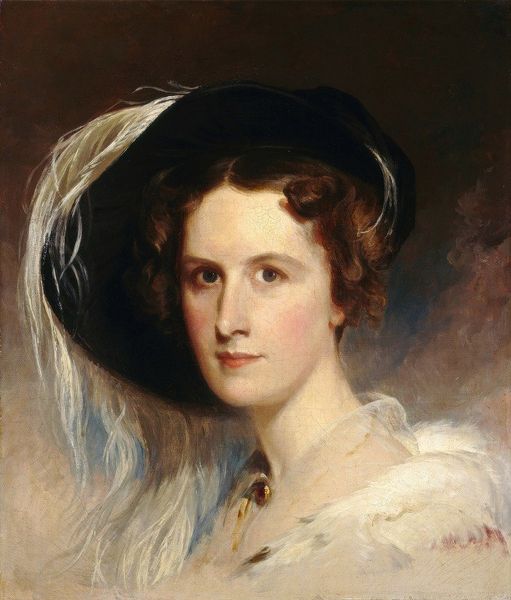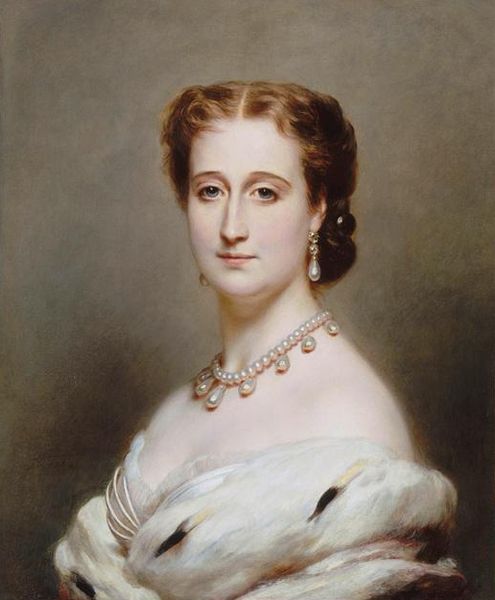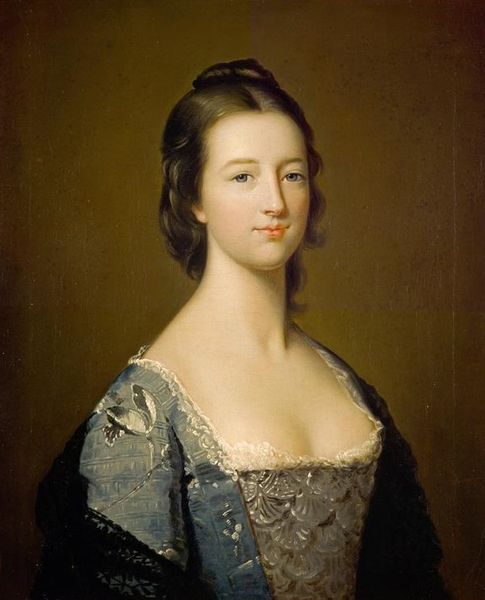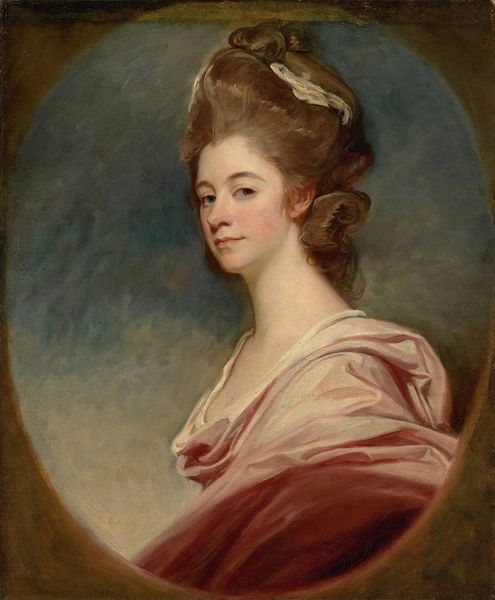
Melanie de Bussiere, Comtesse Edmond de Pourtales 1857
0:00
0:00
franzxaverwinterhalter
Private Collection
Copyright: Public domain
Editor: Winterhalter’s 1857 portrait of Mélanie de Bussière, Comtesse Edmond de Pourtalès, rendered in oil paint, strikes me as a deliberate projection of status. She seems very proper, very contained. What social narratives are embedded in this portrait? Curator: Indeed. Winterhalter was the sought-after portraitist of European aristocracy during the mid-19th century, and his works played a crucial role in constructing and solidifying their image and power. Notice the opulent fabric of her gown, the subtle but confident gaze, and the very deliberate oval format of the painting. It speaks volumes about the values this portrait projects, namely that of wealth, leisure, and aristocratic connection. What do you notice about the setting? Editor: It's quite vague, not much detail to latch onto other than a suggested landscape beyond. It’s clearly not the subject’s "real" environment. Does this conscious lack of a specific environment have something to do with the painting’s social function? Curator: Absolutely. The indistinct background places the Countess outside the everyday world. It serves to elevate her, distancing her from the mundane and emphasizing her status as an ideal, as someone almost untouchable. Consider how such idealized portrayals reinforced class structures. Did these images challenge or reinforce the public’s understanding of power and privilege? Editor: It sounds like it actively reinforced them, turning them into almost…mythical figures. I hadn’t thought about portraits as tools of social engineering before. Thanks for your perspective! Curator: My pleasure! Considering portraiture through a social and historical lens reveals much about the society that produced and consumed it. It encourages us to examine whose stories are being told and whose are being excluded.
Comments
No comments
Be the first to comment and join the conversation on the ultimate creative platform.
